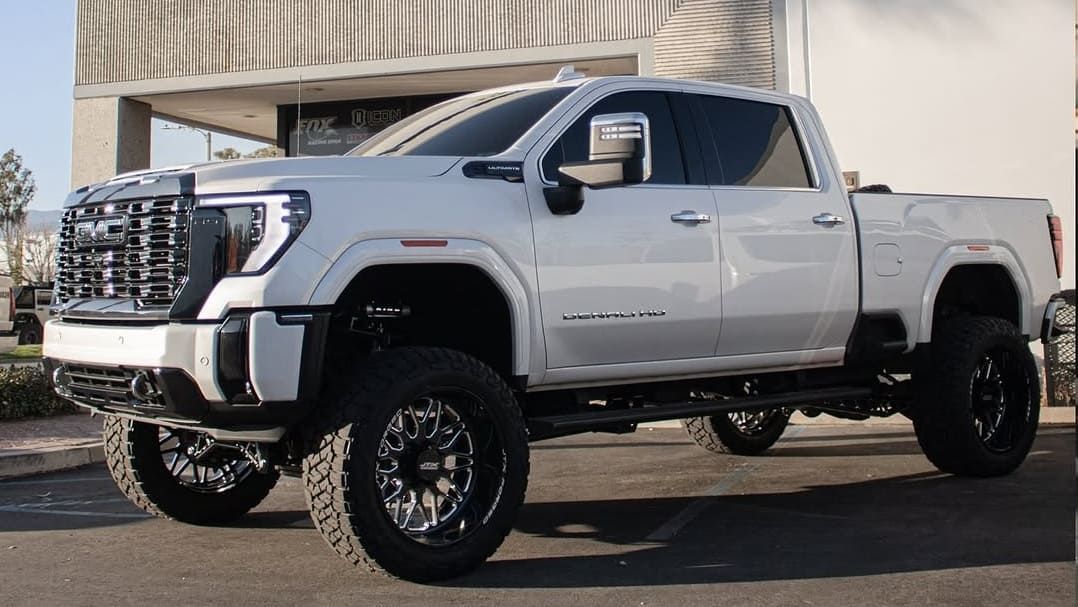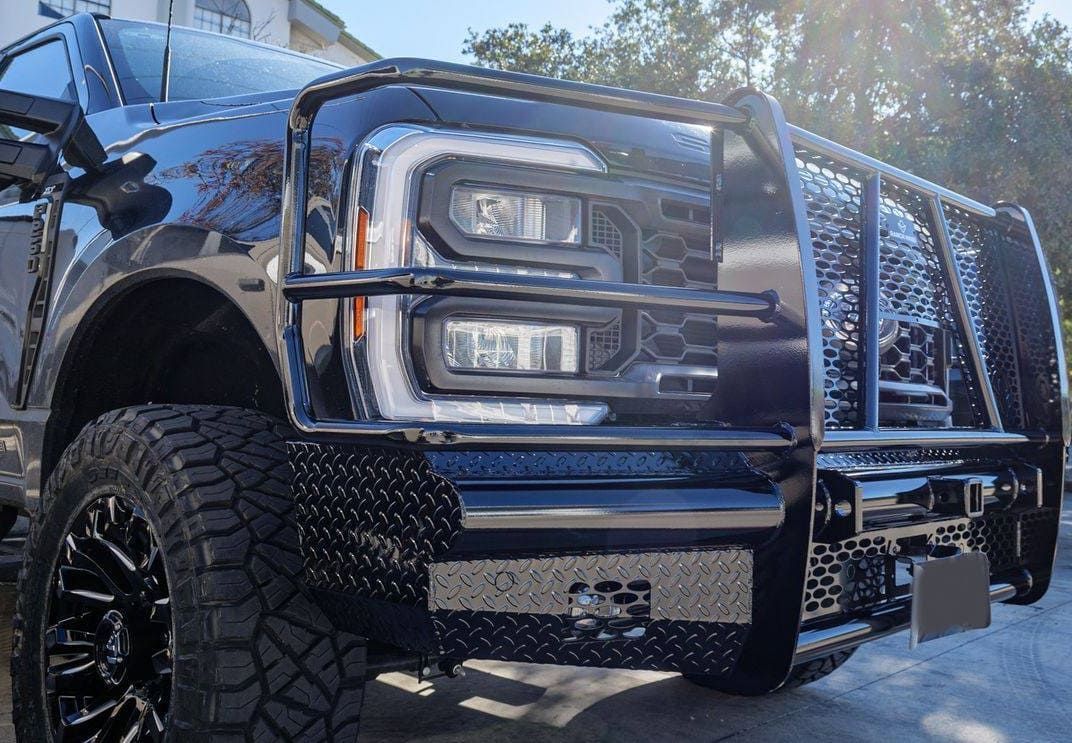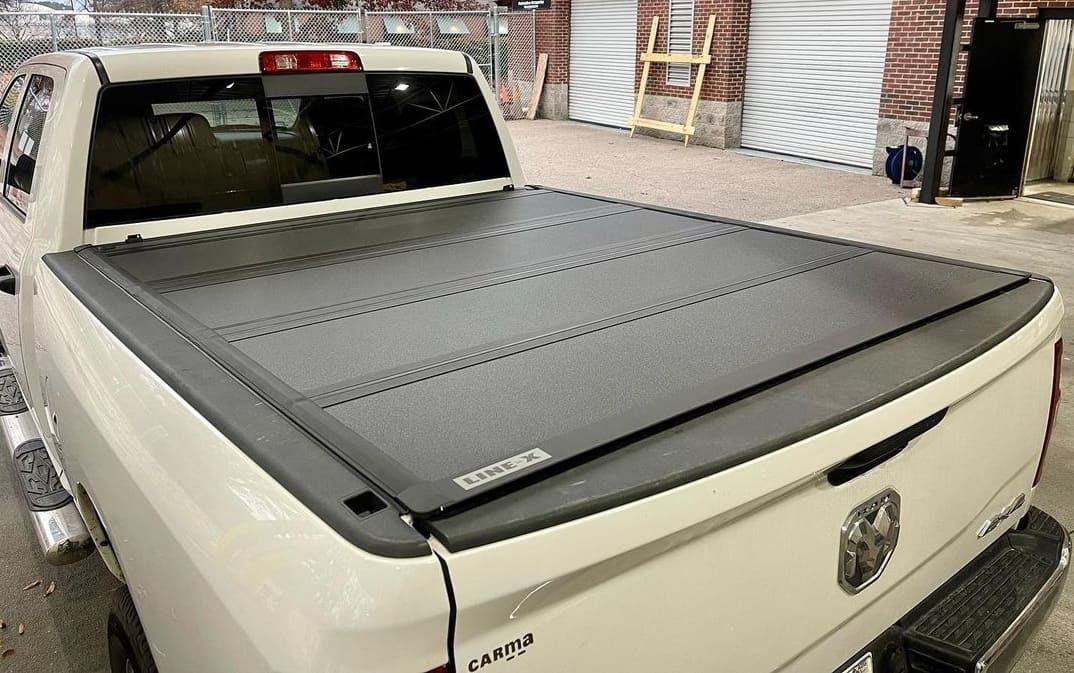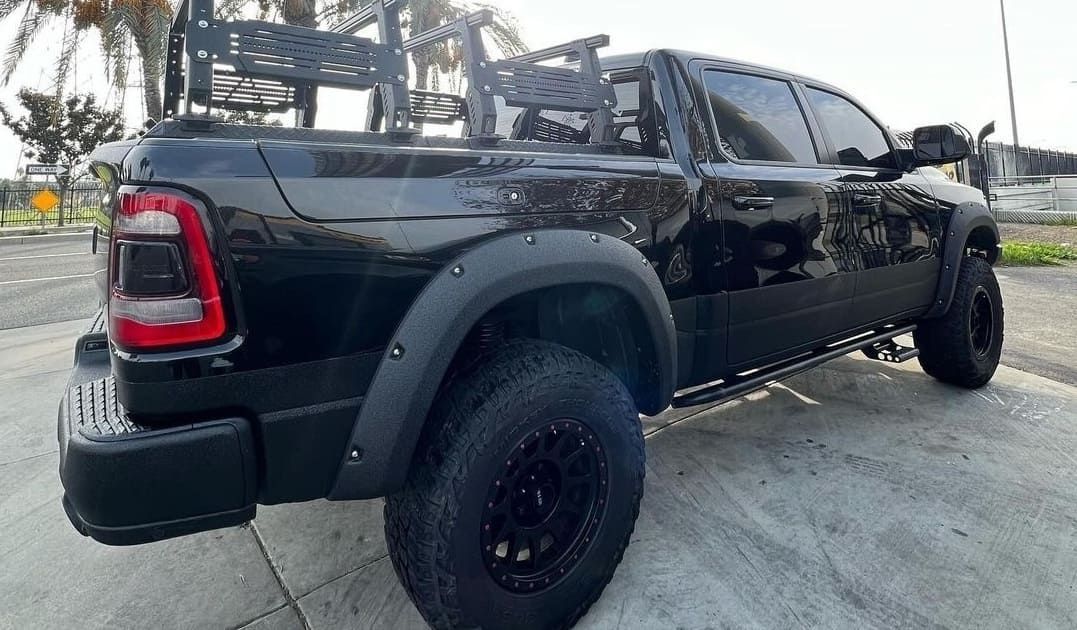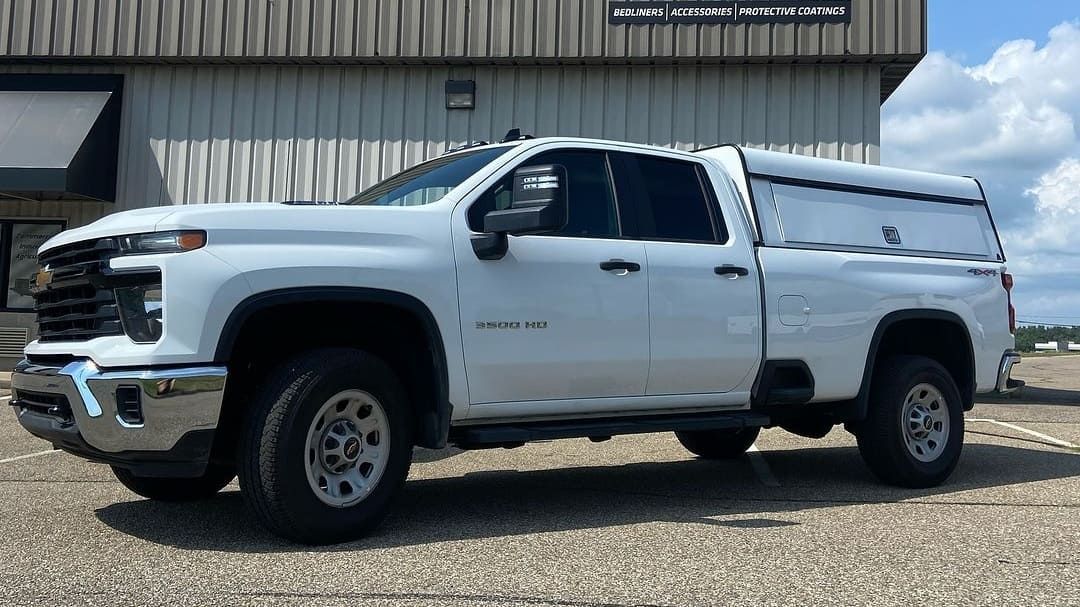Truck Topper Maintenance: Clean, Seal, and Repair
Truck toppers, also known as truck caps, are not just a stylish addition to your vehicle; they are vital for protecting your cargo and enhancing the overall utility of your truck. These structures offer a versatile space for storage and can transform your truck bed into a weatherproof compartment. However, to ensure that your truck topper continues to serve its purpose effectively, regular maintenance is crucial. This involves a proactive approach to cleaning, sealing, and addressing any damage immediately. In this comprehensive guide, we will walk you through the necessary steps to ensure your truck topper remains durable and functional for years to come, preserving both its aesthetic appeal and its utility.

Why Truck Topper Maintenance is Important
Maintaining your truck topper goes beyond mere aesthetics; it's a key aspect of preserving the value and functionality of your entire vehicle. A well-maintained topper not only enhances the appearance of your truck but also provides superior protection against the elements, preventing leaks and ensuring that your cargo remains secure and dry. Furthermore, a neglected topper can lead to structural issues that could compromise the integrity of your truck bed, potentially leading to costly repairs or replacements.
Benefits of Regular Maintenance
- Prolongs Lifespan: Regular care and attention can significantly extend the life of your truck topper, allowing you to maximize your investment over time. Consistent upkeep helps in warding off deterioration caused by environmental factors and usage.
- Improves Appearance: Keeping the topper clean and well-maintained ensures that your vehicle looks its best. A spotless topper contributes to the overall visual appeal of your truck, enhancing its resale value and your pride in ownership.
- Prevents Damage: Early detection and rectification of minor issues can prevent them from escalating into major repairs. By addressing problems such as small cracks or sealant failures promptly, you can avoid more serious damage that could affect the structural integrity of the topper.
How to Clean Your Truck Topper
Cleaning your truck topper is the foundational step in its maintenance regime. The accumulation of dirt, grime, and environmental pollutants can degrade the surface of the topper over time, potentially leading to permanent damage if not addressed. Regular cleaning not only maintains the topper's appearance but also its protective capabilities.
Step-by-Step Cleaning Process
- Gather Supplies: Before starting, ensure you have all necessary supplies on hand. You will need a mild soap or specialized vehicle cleaner designed for the material of your topper, a soft sponge or cloth to avoid scratching, and a bucket of clean water.
- Rinse Thoroughly: Begin by thoroughly rinsing the topper with water to remove loose dirt and debris. This initial rinse helps prevent scratching during the cleaning process and prepares the surface for soap application.
- Apply Cleaner: Mix your chosen cleaner with water according to the instructions, and apply it to the topper using a sponge or cloth. Be sure to work in sections and avoid using abrasive materials that could scratch or damage the surface of the topper.
- Scrub Gently: Focus on scrubbing gently yet effectively, working in small sections to lift dirt and grime. Pay extra attention to areas that are prone to heavy dirt accumulation, such as seams and edges.
- Rinse Again: Once you have cleaned the entire topper, rinse it thoroughly with water to remove any soap residue. Ensuring that all cleaning agents are washed away is crucial to prevent streaking or soap stains.
- Dry Completely: Use a clean, dry cloth to wipe down the topper, ensuring that all moisture is removed. This step is important to prevent water spots and to prepare the surface for any subsequent maintenance tasks, such as sealing.
Sealing Your Truck Topper
Sealing your truck topper is a vital step in safeguarding it against water damage and the harmful effects of UV rays. A high-quality sealant acts as a protective barrier, preventing leaks and maintaining the structural integrity of the topper over time.
Choosing the Right Sealant
Selecting the right sealant is crucial to ensure compatibility with your topper's material. There are various sealants available, each suited to different materials such as fiberglass, aluminum, or plastic. Consult your manufacturer's recommendations or seek advice from a professional to make an informed choice. The right sealant will not only protect against water ingress but also enhance the topper's resistance to UV damage.
How to Apply Sealant
- Clean the Surface: Before applying any sealant, ensure that the topper is completely clean and dry. Any dirt or moisture on the surface can compromise the effectiveness of the sealant.
- Apply Evenly: Use a brush or applicator to spread the sealant evenly across the surface of the topper. Pay special attention to seams and edges, as these areas are particularly susceptible to leaks. Ensure that the application is smooth and consistent to maximize protection.
- Allow to Cure: Follow the manufacturer's instructions for curing time, which usually involves leaving the topper untouched for several hours. This ensures that the sealant sets properly, forming a durable barrier against environmental elements.
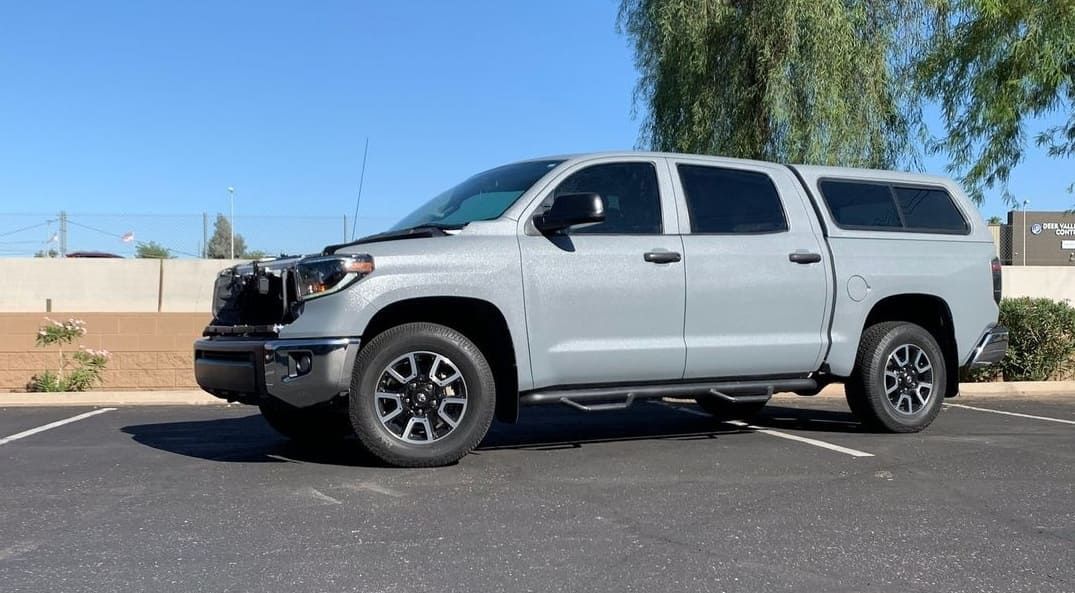
Repairing Your Truck Topper
Even with diligent maintenance, your truck topper may occasionally require repairs. Addressing damage swiftly can prevent more serious issues down the line and extend the lifespan of the topper.
Common Issues and Repairs
- Cracks and Holes: Small cracks or holes can be effectively repaired using a fiberglass repair kit. Begin by cleaning the affected area thoroughly, apply the repair compound as instructed, and sand smooth once it has dried. This will restore the structural integrity of the topper and prevent further damage.
- Leaky Seams: If you notice any leaking seams, it's crucial to reapply sealant to these areas. Ensure the area is clean and dry before application to maximize adhesion and effectiveness.
- Hardware Issues: Regularly check all locks, hinges, and latches to ensure they are functioning correctly. Tighten any loose screws and replace damaged hardware as needed to maintain the security and functionality of the topper.
When to Seek Professional Help
In cases of extensive damage or if you're unsure about the repair process, it's best to consult a professional. They can provide expert advice and ensure that repairs are conducted correctly and safely, preserving the topper's functionality and appearance.
Tips for Long-Term Truck Topper Care
- Regular Inspections: Conduct regular inspections of your topper to identify any signs of wear or damage early on. This proactive approach can help you address issues before they become significant problems.
- Protect from UV Rays: Whenever possible, park your vehicle in shaded areas or use a UV-protective cover to prevent sun damage. Prolonged exposure to the sun can cause fading and weaken the topper material over time.
- Avoid Harsh Chemicals: When cleaning your topper, use only mild cleaning products specifically designed for vehicle surfaces. Harsh chemicals can cause damage and degrade the finish of the topper, leading to reduced longevity and performance.
Conclusion
At LINE-X of Greenville, your trusted and certified LINE-X Accessories Store near you, we proudly serve Greenville, SC, and offer free estimates to help you protect and upgrade your vehicle with confidence.
Maintaining your truck topper through regular cleaning, sealing, and repairing is essential for extending its lifespan and ensuring its functionality. By following the steps outlined in this guide, you can keep your truck topper in excellent condition, providing the protection and utility you need for your vehicle.
Whether you're a seasoned truck owner or new to truck toppers, these maintenance tips will help you keep your topper in top shape for years to come. A well-cared-for topper not only protects your cargo but also enhances your vehicle's overall value and appearance—making maintenance a worthwhile investment.
FAQs About Maintaining Your Truck Topper Properly
How often should I clean my truck topper?
You should clean your truck topper at least once a month, or more often if you drive off-road or in salty, muddy, or dusty environments.
What’s the best way to clean a truck topper exterior?
Use a pH-balanced car wash soap, soft sponge or mitt, and rinse with clean water. Avoid abrasive brushes or high-pressure washers that can damage seals or paint.
Can I take my truck topper through an automatic car wash?
Only if the topper is securely mounted and weather-sealed. Avoid brush-style car washes, as they can scratch the topper’s windows or finish.
How do I clean the windows on my truck topper?
Use a tint-safe glass cleaner and microfiber towel. For plastic windows, use a non-abrasive plastic polish to avoid clouding or scratches.
Do truck toppers need sealing or resealing?
Yes. The weather seals around the base and windows should be inspected and resealed with automotive-grade silicone or rubber seal conditioner every 6 to 12 months.
How do I check for leaks in my truck topper?
Spray the topper with a hose or check after rain. Look for moisture around window seams, edges, or bolt holes. Sealing worn areas early prevents major damage.
What’s the best way to prevent rust or corrosion?
Clean regularly, especially after exposure to road salt, sand, or rain. Keep drainage channels clear and touch up chipped paint or metal hardware to prevent rust.
How do I maintain the locking mechanism on my topper?
Lubricate locks and hinges with a dry graphite lubricant or silicone spray every few months to keep them smooth and rust-free.
Can I repair cracked or damaged fiberglass on a topper?
Yes, small cracks can be repaired using fiberglass repair kits. For major structural damage, consult a professional repair shop.
How do I maintain the seal between the topper and truck bed?
Check the rubber gasket or foam seal regularly for cracks or compression. Replace the seal if water, dust, or light penetrates the bed area.
Is it safe to stand or sit on a truck topper?
Most toppers are not load-bearing unless rated for it. Standing on them can cause cracks, dents, or leaks, especially in fiberglass models.
Should I wax or polish the topper?
Yes. Waxing your topper every 3–6 months helps protect the finish from UV rays, fading, and oxidation, especially in hot climates.
How do I clean the inside of the truck topper?
Vacuum debris, wipe surfaces with a mild cleaner, and ensure drainage holes and window tracks are clear of dirt and debris.
Can I replace worn weather stripping myself?
Yes. Purchase replacement weather seals compatible with your topper model and apply them using adhesive-backed strips or sealant.
What products should I avoid when cleaning a topper?
Avoid ammonia-based cleaners, abrasive pads, or harsh chemicals that can degrade rubber seals, plastic windows, or painted surfaces.
How do I store a truck topper if I remove it seasonally?
Store it on a flat surface or specialized rack, covered from direct sunlight, and avoid stacking objects on top. Clean and dry thoroughly before storage.
Is there a difference between aluminum and fiberglass topper care?
Yes. Fiberglass toppers may need polishing, while aluminum toppers require rust checks and protection of anodized surfaces.
How do I fix a leaky window on my truck topper?
Inspect for cracks or failed seals. You can reseal with automotive-grade RTV silicone, or replace the entire window gasket if needed.
Do truck toppers have a maintenance schedule?
While there’s no set rule, inspecting and cleaning your topper every 3 months and resealing at least once a year is a good standard.
Why is truck topper maintenance important?
Regular maintenance extends the life of your topper, prevents water damage, mold, and rust, and ensures your gear and cargo stay dry and protected.


